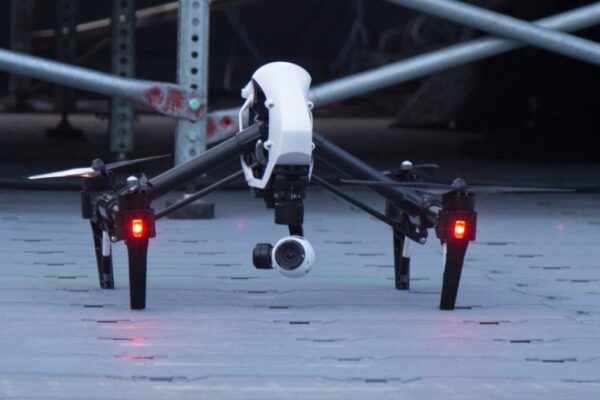Space Pilot Aims To Save Civilization By Spreading It To More Planets
Share to FacebookShare to TwitterShare to LinkedinThe Polaris Dawn crew trains inside a leading-edge SpaceX capsule on the eve of launching an … [+] incredible orbital flight demo
Photo courtesy of Jared Isaacman and the Polaris Program Billionaire-pilot Jared Isaacman, who headed a team of independent astronauts that just touched down from an incredible Earth-orbiting demo flight, says he aims to help safeguard human civilization by spreading it across other planets, starting with Mars.
Across a sweeping interview, Isaacman told me the tech advances he tested during his five-day Polaris Dawn mission – from the next-generation SpaceX spacesuits to the Dragon capsule specially adapted for spacewalks – are all aimed at helping humanity create outposts across the solar system.
Isaacman, who co-funded the super-speed development of SpaceX’s EVA suits, predicted they will ultimately protect spacefarers across an atlas of new celestial destinations.
The new astro-gear, he told me, will “be a stepping stone to the millions of spacesuits for the Moon and Mars travellers of the future.”
Jared Isaacman, who co-funded the super-speed development of SpaceX’s cutting-edge spacesuits, … [+] predicts they will ultimately protect spacefarers across the Moon and Mars.
Photo courtesy of Jared Isaacman and the Polaris Program He shares SpaceX founder Elon Musk’s vision of terraforming Mars as a million interplanetary nomads join a collective odyssey to the orange-red Martian dunes.
By recreating Mars in the Earth’s image, with a restored ocean and atmosphere, and domed human-engineered Edens along the Martian shorelines, the twin planets could become mutually protective arks of life and civilization, ready to rescue the other if some world-shattering catastrophe were to strike.
MORE FOR YOUTrump Vs. Harris 2024 Polls: Trump Up In 2 New Surveys—Harris Leads In 2 OthersPennsylvania 2024 Trump-Harris Polls: Harris Up Nearly 2 Points In Latest SurveyFormer Model Alleges Trump Groped Her During Trump Tower Visit With Jeffrey Epstein During the Polaris Dawn mission, Isaacman piloted the capsule through the intense radiation of the Van Allen belt in low Earth orbit, before leading a surreal spacewalk, backlit by a glowing blue globe, and then navigating the Dragon’s fiery atmospheric reentry.
“Every one of the mission objectives of the Polaris Dawn flight,” he says, “supports making humanity a multi-planetary species.”
Just before Isaacman’s launch into orbit, SpaceX creator Elon Musk told his 200 million followers on X: “The first Starships to Mars will launch in 2 years when the next Earth-Mars transfer window opens.”
If these robotically piloted Starships ace their landings on the Martian surface, Musk added, “then the first crewed flights to Mars will be in 4 years.”
“Flight rate will grow exponentially from there,” he predicted, “with the goal of building a self-sustaining city in about 20 years.”
The SpaceX visionary sketched out his masterplan to construct the first technopolis on Mars – across two decades and 10,000 flights of the futuristic Starship – during a fantastical overview he narrated – like a sci-fi film – from his Starbase launch center, just off the turquoise seas of the Gulf of Mexico.
“Starship is is really the key to making life multiplanetary,” Musk said, backdropped by three massive prototypes of the silver super-ship.
“The overarching goal of the company is to extend life sustainably to another planet – Mars is the only option really – and to do so ideally before World War III.”
In advance of some doomsday chain of events threatening the people and the future of the Earth, he added, SpaceX’s aim is to “build out as quickly as possible a self-sustaining civilization on Mars.”
“If there’s something that takes out Earth, like let’s say there’s a World War III – global thermonuclear warfare,” he said, Mars could provide a weapons-free sanctuary that protects at least part of humanity, and the long-term survival of the human race.
Elon Musk says he will race to build the first technopolis on Mars before World War III – with … [+] thermonuclear warfare – erupts on Earth. Shown here is the most powerful nuclear weapon ever created – by the Russian Soviets a generation ago (Photo by NATALIA KOLESNIKOVA/AFP via Getty Images)
AFP via Getty Images He also predicted that spiralling marvels of engineering could restore Mars as a water world, with a thickening atmosphere and artificial magnetic field that could protect its denizens from hazardous solar and cosmic radiation.
“We can warm up Mars. We can densify the atmosphere and there would be a liquid ocean on about 40% of the surface,” he predicted.
“So we could make it an Earth-like planet.”
SpaceX’s chief designer is just the latest in a line of vanguard space scholars who propose that christening an archipelago of off-planet colonies is the best strategy to protect the future of Homo sapiens before the home world is threatened by nuclear warfare, mass bioterrorism, or a cosmic cataclysm.
During one of his last interviews, the world-acclaimed astrophysicist Stephen Hawking told the BBC that if the planet’s leading space players began constructing cosmopolitan cities across other planets and moons before one of these globe-shaking catastrophes hits, “A disaster on Earth would not mean the end of the human race.”
Space seer Isaacman agrees: “Throughout Earth’s history there has been a series of extinction events that would have wiped out humans if we had been here then.”
In just one example, he says, the 10-kilometer asteroid that crashed into the planet 66 million years ago killed all but the winged dinosaurs, and most other life at the time.
Settling on other planets, Isaacman says, “is an obligation we have for the protection of our civilization.”
Safeguarding civilization, and especially its children, animates Isaacman’s extraordinary life as a philanthropist: during his first SpaceX flight, called the Inspiration4 mission, he helped raise $240 million for the St. Jude Children’s Research Hospital, and personally donated an astounding $125 million.
His explanation for that mission is simple and humble: “No child should die in the dawn of life.”
At the start of the first Space Age, he adds, “some people questioned why the U.S. was spending so much of its budget on space when there are problems back on Earth.”
“I want to show that we can do both philanthropy and space exploration simultaneously,” he says, taking care of the Earth’s most urgent problems while pushing forward humanity’s expansion into the heavens.
The Polaris Dawn team spent two years training for the recent mission, with an intensive schedule that included piloting the SpaceX spacecraft across a simulated series of space odysseys, preparing for the immense gravitational force of lift-off on human centrifuges, and flying jet fighters to replicate the pressure of keeping a cool head while moving at incredible speeds.
Astronaut training for the Polaris Dawn team included piloting jet fighters to perfect remaining … [+] cool-headed while traveling at tremendous speeds
Photo by John Kraus and courtesy of Jared Isaacman and the Polaris Program To super-charge SpaceX’s astronaut training regimen, Isaacman invited two of its top-flight engineers, Sarah Gillis and Anna Menon, to join him on the Polaris mission.
“I knew Sarah and Anna would be exceptional for this mission.”
Gillis oversees SpaceX’s astronaut training operations, including for NASA pilots slated to command Dragon flights to the International Space Station, while Menon, a onetime NASA biomedical flight controller for the ISS, is now a SpaceX Mission Director.
Now, Isaacman says, “Sarah and Anna can bring back a lot of astronaut training knowhow and feedback on space technologies to SpaceX from the Polaris Dawn flight.”












 Bitcoin
Bitcoin  Ethereum
Ethereum  Tether
Tether  XRP
XRP  USDC
USDC  TRON
TRON  Lido Staked Ether
Lido Staked Ether  Dogecoin
Dogecoin  Figure Heloc
Figure Heloc